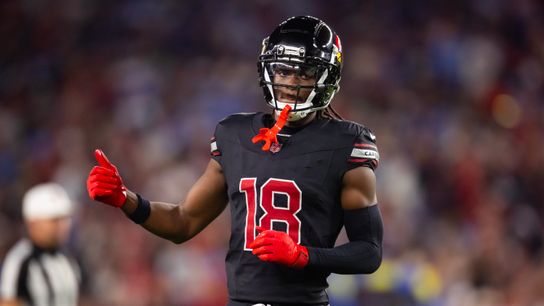When it comes to the NFL draft, the top of the first round is often concentrated on the quarterback position. Thus, expectations become astonishingly high when a wide receiver is selected as the fourth overall pick in the draft. After all, for a non-quarterback to be taken with such a premium selection, a player has to truly stand out as a “can’t-miss” prospect.
Between 2021 and 2023, the only wide receivers selected with a top-10 pick were Ja’Marr Chase, Jaylen Waddle, DeVonta Smith, Drake London, and Garrett Wilson. All of these players established themselves seamlessly at the NFL level, and none were selected higher than Marvin Harrison Jr. was this past April.
Coming out of Ohio State, Harrison Jr. frequently received the infamous “generational prospect” label, and for good reason. Over his final two seasons in college, the star receiver accumulated 2474 receiving yards, and 29 total touchdowns, while also averaging 17.2 yards per reception. For context, those numbers were strong enough for him to be named an All-American in both of those seasons, in addition to finishing in fourth place in Heisman Trophy voting in 2023. Hence, why the Arizona Cardinals bypassed speculative opportunities to trade out of the fourth overall pick to make him the first non-quarterback selected.
Immediately, Arizona’s faith in Harrison Jr. appeared to be paying dividends. Although he was held to just one catch and four receiving yards in his NFL debut, he followed that up by catching four touchdowns over the next three weeks. The highlight performance came in Week 2, where he managed to generate 130 receiving yards and two touchdowns on just four catches.
Since then, however, things have been a much different story:

Ironically, Arizona has won two of their past three games, though they have now been held to 17 or fewer points in four of their past five games, and have exceeded 200 passing yards just once in that span. While they have gotten by thanks to a prolific rushing attack and late-game heroics, a more explosive passing attack could make things very interesting in the NFC West with a relatively favorable schedule moving forward.
Even despite the recent drop-off in production, Harrison Jr. still leads all Arizona wide receivers in targets, receiving yards, and touchdowns; tight end Trey McBride currently leads the team in targets and yards. That being said, his receiving success rate is the lowest on the team, which makes sense considering he and quarterback Kyler Murray are converting on just 46.5% of the passes thrown to him. To be fair, much of that has to do with how he is being used. Not only does he have the highest average depth of target on the team, but Harrison Jr. currently has the third-lowest expected yards after catch/reception in the NFL as well as the third-lowest average separation (per NFL Next Gen Stats). In short, these numbers speak to him not benefitting from many high-percentage opportunities.
As the weeks have gone on, Murray’s intended air yards have continued to shrink, aligning with a more conservative offense with targets going to the tight end and running backs. The broadcast team for the team’s game against the Chargers on Monday night mentioned several times the need to scheme plays specifically to get Harrison Jr. the ball to establish some sort of rhythm, and it is hard to argue with that premise. Of course, it does not help that the Cardinals will be facing three of the top-seven defenses in passing yards allowed per game before their Week 11 bye, but the long-term picture involves them maximizing the development of one of the premier receiver prospects in recent years.
We have already seen Harrison Jr. demonstrate his abilities through multiple strong performances, and we are only seven weeks into his professional career. His inconsistent production thus far likely reflects more on time being needed for him to fit into the Cardinals’ offense than him needing time to translate to the NFL, and it would not be a surprise whatsoever for him to see a massive surge in production soon. Remember that it took his dad, a Hall of Famer, four seasons to make a Pro Bowl, and the rest was history from there. Perhaps it’s as simple as “like father, like son.”


